I'm trying to codesign my macOS screensaver project to get rid of the "unidentified developer" warning message. Both Apple's documentation and this person on Apple's forums say that you should use the "Developer ID Application" signing certificate to do it. But that doesn't appear to work for me.
When I follow Apple's instructions on how to test for proper signatures the response I get is as follows:
Screensaver.saver: rejected (the code is valid but does not seem to be an app)
My signing settings look like this:
I'm not sure what else I should try at this point. Mostly I'm worried about the rumor future mac apps will have to be signed/notarized and what does that means for screensavers?
